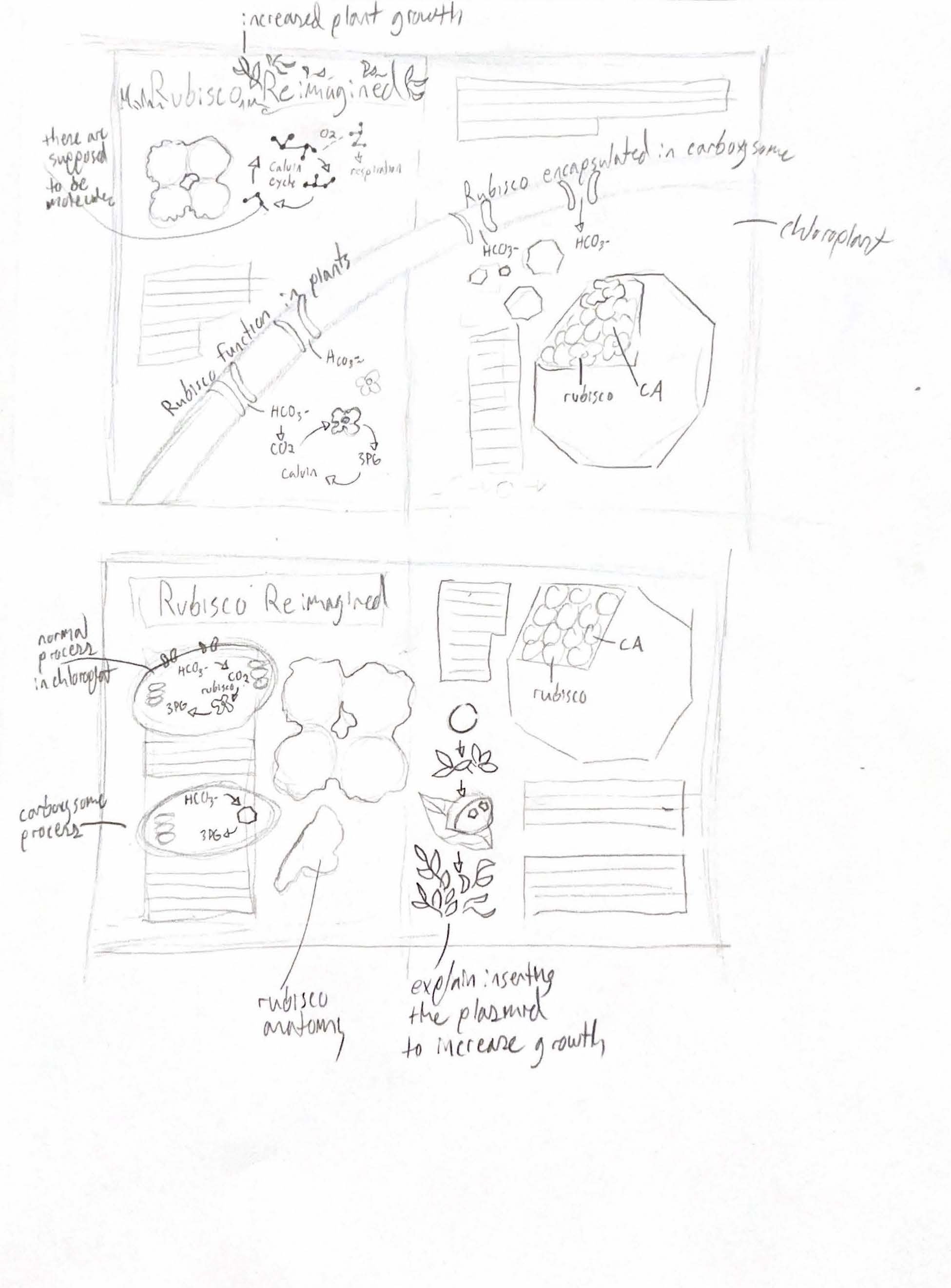Rubisco Reimagined
Molecular visualization
-
Protein Data Bank, Chimera, VMD, Maya, Photoshop, and Illustrator
-
The purpose of this assignment was to produce an educational magazine spread depicting a molecular process
-
Dr. Derek Ng, University of Toronto Professor
Description
Rubisco is the most abundant protein on Earth and a key enzyme in the carbon fixation cycle. Despite its abundance, rubisco is remarkably inefficient and limits the rate of photosynthesis in plants. New research explores altering the genome of crops of produce their own CO2 concentrating mechanisms (CCM) to improve photosynthesis rates and ultimately increase crop yields. I chose this topic because it has direct implications for our agricultural future and many people are not aware of the enzyme rubisco. Process
Research was the most critical aspect of this project. I read multiple scientific journals on the structure and function of rubisco, as well as the specific structure of the carboxysome to ensure accuracy. Protein structures were created using data from the Protein Data Bank which was then taken into VMD and Maya. References and PDB info are available here:
References and Components Sketches
Mock-ups
Molecular models & Maya
PDB files were brought into VMD. The representation style was turned to QuickSurf to visualize the 3D shape of the proteins. VMD models from left to right: hexamer, rubisco, carbonic anhydrase, and the pentamer.Each of the proteins were then taken into Maya, retopologized, and placed into a MASH network on an icosahedral shape. The inner portion with rubisco was made in the same way but with a slightly smaller icosahedron in order to be able to sit inside the shell. A window was made in the outer shell using a visibility node.The membrane was made using lipid data from https://www.charmm-gui.org/ . I made a double layer by putting two MASH networks on a bent plane and slightly offsetting them. The cut transport protein was made using PDB data and a visibility node to create a cylindrical channel. The 3D elements were then rendered, edited in Photoshop, and brought into Illustrator for compositing. 















